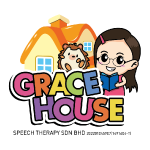Speech-Language Therapy
Speech-language therapy can be in three forms: Individual speech-language therapy, group speech-language therapy and home visit speech-language therapy sessions. In general, there is no great leap in a child’s speech and language development. To get a new skill, the child takes time to learn. He needs the necessary exposure (introductory phase), requires regular practice (learning phase), and finally progressing to generalization of the targeted skills (stabilization phase). Usually speech-language therapy will be effective when commitment is consistent. There will be times when you and your child feel the fire and energy to learn; there will be times when both of you feel exhausted and dreadful to even move on. And that’s normal. Accept the ups and downs, for speech-language therapy is actually a journey, a learning journey. Don’t be afraid, we will walk with you. Together we celebrate even the smallest achievement, or weep with you during the troubled period.


Individual speech-language therapy
Individual speech-language therapy is usually best for helping a child to develop new skills. Prior to the session, we will plan suitable activities and customize it according to your child’s need. Our therapy materials will be toys, handmade cards, worksheets, storybooks and so on. Within the one-hour individual speech-language therapy, we will conduct 2-5 activities to achieve the goals we set for the child. Hence, please talk to your Speech-Language Therapist regarding the therapy goal(s) and your child’s progress. However, from the individual speech-language therapy session(s), carryover of newly learned skills to different environments may be challenging for the child. When the child requires an opportunity to carryover the skills, then group therapy would be highly recommended.
Group speech-language therapy
Group speech-language therapy is effective in assisting a child to transfer and practice newly developed skills to daily situations. It offers opportunities for a child to interact and communicate with other children in a group. It also allows the child to practise communication skills in a setting that mimics a real-world environment (e.g., a classroom). We will assess the capability and strength of each child/playdate before deciding to pair them up in group therapy. This move optimizes the effectiveness of group therapy. For instance, child A has pronunciation problems, and child B has problems in combining words. Both of them can benefit tremendously from group therapy because they can learn from each other.


Home visit speech-language therapy
Home visit speech-language therapy is time-effective for a child or an adult. It provides an intervention environment that a child is familiar with, thus increasing the likelihood of his/her gains. However, a child may miss the opportunities to practice his/her skills outside of his/her home environment. We will have our experienced in-house Speech-Language Therapist to visit your house and conduct the session(s) in your house. Transport fee would be charged according to mileage. Many families find this option helpful especially when there is lack of transport and their schedule has little window for therapy. Don’t worry, we are here to solve your problem.




